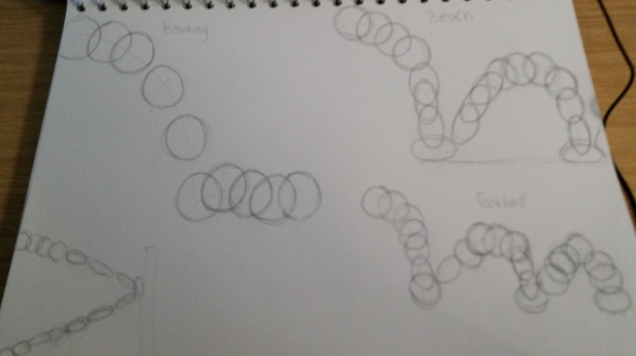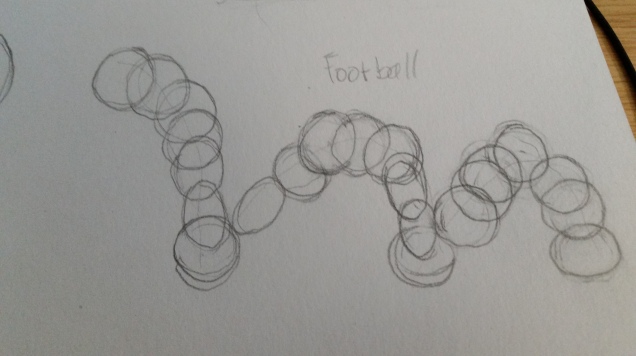Early Projecting Devices
The magic lantern was invented in 1659 by Christiaan Huygens, a Dutch mathematician and physicist. It works by using artificial light and transparent plates to create the illusion of motion.

Along with the magic lantern, other early projecting/moving devices would give the impression of movement, and therefore animation.

The Phenakistiscope, invented by Dr Joseph Plateau, around 1833, worked by spinning a plate at speeds that make it appear as though the images printed on the plate were moving.
The viewer would look through the small slats on the plain disk, and see the images moving from behind them.
Along with revolutionising how motion can be perceived, the Phenakistoscope also led the way for shutter-based technology, which helped the development of cameras and photography.
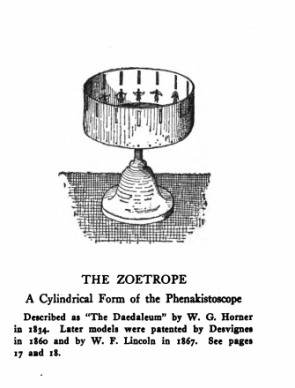
Operating similarly to the Phenakistoscope, the Zoetrope was invented by William George Horner in 1834. However, unlike the Phenakistoscope, the Zoetrope doesn’t require a mirror for the movement to appear, yet it still required looking through small slots at the moving images.
Due to the length of the slots, and how it affected the motion, the images on the inner disk had to be distorted, otherwise, they would appear elongated and out of proportion.
 The Praxinoscope could be considered a hybrid between both the Phenakistoscope and the Zoetrope. Invented by Charles-Émile Reynaud in 1876. It utilized the cylindrical structure of the Zoetrope, with the use of mirrors used in the Phenakistoscope.
The Praxinoscope could be considered a hybrid between both the Phenakistoscope and the Zoetrope. Invented by Charles-Émile Reynaud in 1876. It utilized the cylindrical structure of the Zoetrope, with the use of mirrors used in the Phenakistoscope.
This device is unique, however, in that it didn’t use the small slats to in which to show the images moving. Instead, the mirrors act as a viewing window.
 The Zoopraxiscope, invented by Eadweard Muybridge in 1879, is different from the previous devices for many reasons. Firstly, the disks used in a Zoopraxiscope were painted using photography.
The Zoopraxiscope, invented by Eadweard Muybridge in 1879, is different from the previous devices for many reasons. Firstly, the disks used in a Zoopraxiscope were painted using photography.
Next, the Zoopraxiscope used light to project the images, similarly to the Magic Lantern. However, the Zoopraxiscope managed to create far more lifelike movements than the Magic Lantern, due to both Muybridge’s motion studies being used as reference imagery, along with the increased number of frames on one single disk.
The Zoopraxiscope is said to have bridged the gap between photography and projectors, leading the way for further developments in motion.
Pioneers in Film and Animation
Emile Cohl
1857 – 1939
Emile Cohl was a pioneer of animation. Cohl is credited with creating the first-ever animated cartoon. Before his feats in animation, Cohl created comics, drawings and caricatures. He was an assistant to Andre Gill, who was a very famous caricature artist in France.

In his later life, Cohl was inspired by animator John Stuart Blackton and using similar animations techniques created his first film, ‘Fantasmagorie’ in 1908.
To create ‘Fantasmagorie’ Cohl had to study Blackton’s animation frame by frame in order to understand how animation was done.
‘Fantasmagorie’ was done with drawings on hundreds of pieces of paper, each representing a frame from the final film. Cohl’s creations and developments in animation lead the way for modern animation techniques, such as frame by frame animation. Cohl remains a very iconic figure in motion.
Georges Méliès
1861 – 1938
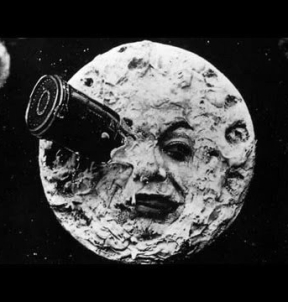 Georges Méliès was a French filmmaker and illusionist. He is considered the ‘father of special effects’ for his work with effects in film and cinema. He used a wide mixture of various film techniques, such as superimposing, stop motion and double exposure. All of which were very modern techniques at the time.
Georges Méliès was a French filmmaker and illusionist. He is considered the ‘father of special effects’ for his work with effects in film and cinema. He used a wide mixture of various film techniques, such as superimposing, stop motion and double exposure. All of which were very modern techniques at the time.
The film L’oeuf du Sorcier used a mixture of dissolves and fades, along with jump cuts to give the impression of an egg appearing, disappearing, growing and transforming.
Méliès is credited with creating the jump cut, however, he discovered it accidentally whilst filming. Jump cuts, fades, double exposure and superimposing are all still used in modern cinema and film.
Winsor McCay
1869 – 1934
 Winsor McCay was a cartoonist and showman, famous for his vaudeville acts involving cartoons and illustrations of audience members. He is not the first animator or cartoonist, but he is credited with being the creator of the first fully-fledged animated character. A character with humour and personality.
Winsor McCay was a cartoonist and showman, famous for his vaudeville acts involving cartoons and illustrations of audience members. He is not the first animator or cartoonist, but he is credited with being the creator of the first fully-fledged animated character. A character with humour and personality.
In 1911, McCay created ‘Little Nemo’. Inspired by flipbook technology, he used four thousand separate pieces of paper, each with a frame of the cartoon. ‘Little Nemo’ consists mostly of squash and stretch animations, a technique still used heavily in animation today. The film is extremely important because of this technique, and the use of frame by frame animation.
In 1914, McCay released ‘Gertie the Dinosaur’. This animation made use of character and keyframe animation, all very ground-breaking ideas in animation at the time. All of McCay’s animation frames were drawn and then mounted onto sheets of cardboard. To test the animations, the cardboard would be moved using a rotary machine.
George Eastman
1854 – 1932
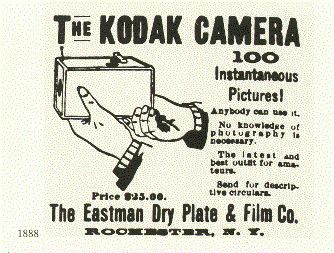 George Eastman, the inventor of the Kodak camera, strived to make photography more accessible to everyone. His first Kodak camera was sold in 1888. By the year 1927 Kodak was the largest company in the U.S specialising in photography.
George Eastman, the inventor of the Kodak camera, strived to make photography more accessible to everyone. His first Kodak camera was sold in 1888. By the year 1927 Kodak was the largest company in the U.S specialising in photography.
The inspiration for the Kodak camera came about when he was due to take a trip, and a friend recommended he take photographs when he was there. He purchased all the photography equipment but didn’t actually take the trip he meant to. Rather, he spent his time researching how to make photography more easily accessible, portable and less cumbersome.
Thomas Edison and William Dickson
1847 – 1931 | 1860 – 1935
Working together, both inventors made a breakthrough in projecting technology and therefore made history. Both are credited with the invention of the kinetograph and the kinetoscope.
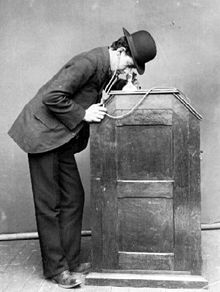 The kinetograph was the first ever camera to take pictures and convert them into strips of film. The kinetoscope was a projector that flashed between different frames of motion, and when viewed through a small viewing window, created the illusion of motion or film.
The kinetograph was the first ever camera to take pictures and convert them into strips of film. The kinetoscope was a projector that flashed between different frames of motion, and when viewed through a small viewing window, created the illusion of motion or film.
These devices changed the world of film, motion and animation. By developing the existing projecting devices such as the magic lantern or zoopraxiscope, it allowed for even more development in projector technology.
The kinetograph, too, by adding onto existing camera technologies, allowed film and animation to progress to new levels of ingenuity and complexity.
2D Animation & Inventors
Otto Messmer & Felix
Credited with creating the first animated film star, Felix the Cat. Making his first appearance in 1919, in the short film Feline Follies, Felix became a massive hit.

Felix was a successful mascot in that he was immediately recognizable. Over 100 cartoon episodes were produced during the 1920s starring Felix.
From this; many other cartoons were conceptualized and created. It’s very possible Felix sparked the creation of many of the other 20s cartoon mascots.
The 1920s and 30s are famous for their cartoons, and how much personality they possessed. The 1930s saw such animated films as Looney Tunes, Tom and Jerry, Popeye the Sailor and Betty Boop.
So, by Felix being a starting point, invented a good 30 years prior to these, is certaintly a point in animation history to remember.
Walt Disney
Arguably the most well-known animation studio, both of the modern day and of the past, Disney has gained an immense reputation for their animations, characters and films. Founded in 1923, the studio has only grown in size as the years went by.
 In 1928, Walt Disney released ‘Steamboat Willie’, which was a landmark in animation history, for two main reasons. Firstly, it was the first animation to introduce Disney’s mascot character, Mickey Mouse. It was also the first animation to be synchronised with sound. This changed the world of animation.
In 1928, Walt Disney released ‘Steamboat Willie’, which was a landmark in animation history, for two main reasons. Firstly, it was the first animation to introduce Disney’s mascot character, Mickey Mouse. It was also the first animation to be synchronised with sound. This changed the world of animation.
Disney continued their innovations in animation, and in 1937 released what’s considered to be their greatest film ever created. Snow White took hundreds of engineers, and a great sum of money and investment, but in the end, it was a hit.

Snow White was the first ever full-length cel animated film and Disney’s first ever feature-length animated film. Although it wasn’t the first colour cartoon, it was the first ever colour animated film.
Cel animation involves drawing each frame on a transparent cel, and then carefully, an entire series of motion is created by drawing each frame one by one. Thus, cel animation is extremely time-consuming and is only made more difficult by the lack of technology at the time.
These days, frame animation can be done far faster and easier both traditionally and digitally. By using interpolation and computer graphics, animations can be created much easier, and with less effort. However, modern-day animations still need a great deal of planning and execution in order to look professional and appealing.
